Trading Spaces
Leaders in medical research can enrich their creative output by moving between industry and academia
- Profile
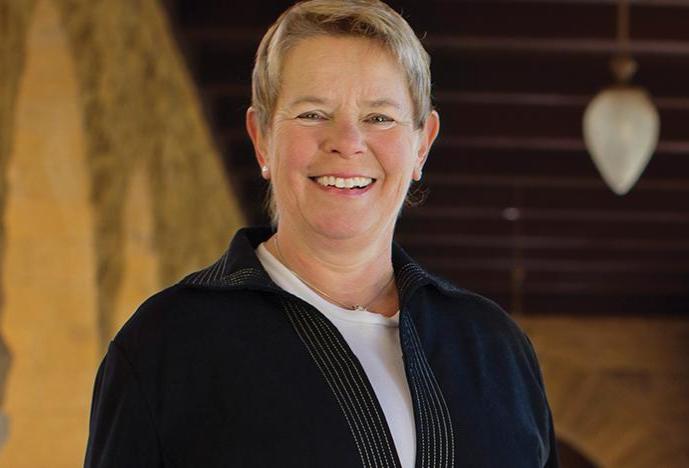
Medical researchers have long navigated an uneasy course between industry and academe. Recently, with attention increasingly placed on issues of conflict of interest, the pressure has grown to attenuate if not break ties between the two. But unique truths lie in the boundary waters; here, four leaders from the Harvard Medical School community share what they’ve learned charting careers that cross the lines.
Joining discovery with entrepreneurship.
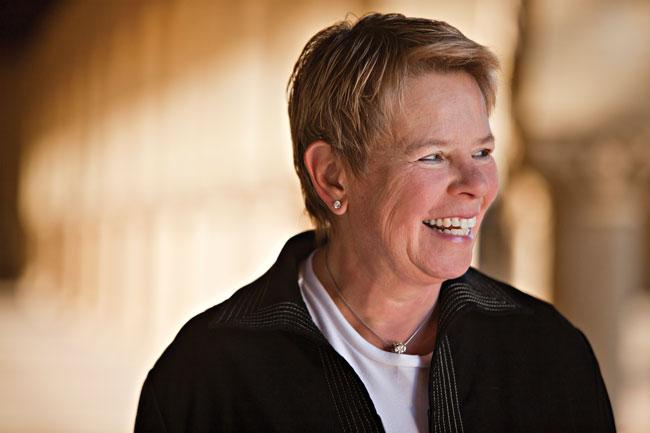
For many physicians, a career in medicine is a straight line—an orderly road that takes them from education and training to patient care, teaching, or a corporate position. Fewer pursue a route that winds between the seemingly disparate worlds of academia and biotech. That’s the path Phyllis Gardner ’76 has trod.
“I’ve spent much of my career in academics, research, industry, or some combination of the three,” says Gardner, now both a professor of internal medicine and clinical pharmacology at Stanford University’s School of Medicine and a partner at Essex Woodlands, a California-based health care venture capital and growth equity firm. “Each of these experiences has helped inform the others.”
Clinical care. Laboratory research. Consulting gigs. A deanship. While at first glance, Gardner’s professional life seems like a whirlwind sampling of all facets of medicine—her rapid, matter-of-fact recounting of her lengthy resume leaves the listener breathless—it is in truth a logical progression for a physician drawn to the most enriching aspects of all those fields.
Gardner’s professional journey began at Stanford, where she ran a laboratory focused on cell biology and ion-channel biophysics and worked in a cardiac arrhythmia clinic. After more than a decade in academia, though, she found herself drawn to the private sector and took the position of vice president of research at the ALZA Technology Institute, a drug-delivery systems company. Eventually she returned to Stanford, where she worked as a professor and, briefly, as dean of education, while still consulting for ALZA and then other corporate ventures. The motivation for constant change was simple for Gardner, who has always been driven by curiosity. “I found all of these opportunities interesting,” she says, “and felt I had something to offer them in return.”
What she has offered industry and academia is the perspective gained from her experiences in both. “Engineers tend to invent a widget and then figure out the best use for it,” she explains. “But physicians and scientists approach discovery in just the opposite way—we identify problems and determine how to fix them. That’s what I’ve been able to bring to my work in industry.”
Likewise, Gardner says, her experience in the for-profit world has enhanced her academic life, particularly in her role as student advisor. “Stanford has an entrepreneurial student body—remember, not everyone in medical school wants to go into patient care,” she says. “Because I’ve worn so many career hats, I can be a role model for students who don’t necessarily plan to enter clinical work.”
At a time when concerns about conflicts of interest are making headlines, Gardner’s varied career shows how academia and industry can benefit one another. “I certainly understand how the interaction between these fields can be problematic,” she says. “When physicians accept direct fees to promote clinical trials, for example, there’s no way that doesn’t influence how they make decisions for their patients.” At the same time, she believes that when doctors work or consult for industry and for a university, the results can be positive for all involved.
“My biggest loyalty is always to my students,” she says. “And to be able to share my experiences with them has been incredibly rewarding.”
Setting priorities by patient need and scientific impact.
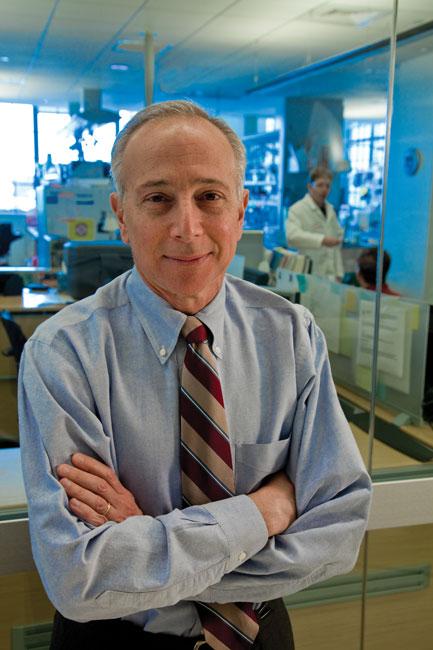
When the call came, Mark Fishman ’76 was at his desk, dispatching his administrative duties as chief of cardiology at Massachusetts General Hospital—something, he recalls, involving reimbursement and the cath lab.
On the line was Daniel Vasella, chief executive of Novartis. The two men had never met, but Vasella wanted Fishman to lead global research for the Swiss drug maker. Fishman was flattered but perplexed. In 2001, Fishman was an HMS professor of medicine well known for pioneering zebrafish models to explore the genetics of organ development. But he’d never developed a drug; in fact, unlike many peers, he’d never even consulted with a drug maker.
“I didn’t even know Novartis was a drug company,” Fishman says. (In fact, it’s one of the world’s largest.)
Fishman agreed to dinner—and the two physicians hit it off. Although Fishman declined to join Novartis, he offered to provide unpaid advice as Vasella reassessed the company’s approach to research. During the ensuing six months, he counseled company leaders to separate research from marketing and to relocate their scientific headquarters to the United States.
Novartis agreed to the changes, and again Vasella inquired about Fishman’s interest in the job. “I said no, I wasn’t negotiating,” Fishman recalls. “I was just trying to be helpful.”
But Vasella proved persuasive. In 2002, Fishman accepted the job of president of the new Novartis Institutes for BioMedical Research and fleshed out his sketch of an independent, global research organization headquartered in Cambridge, Massachusetts. His strategy: identify priorities by individual patient need—regardless of population size—and by scientists’ ability to make an impact. It was a radical departure in an industry that based decisions on estimates of a drug’s value long before it reached the clinic.
“Historically, the pharmaceutical industry has been terrible at predicting what something would be worth,” Fishman says, pointing to forecasts that cholesterol-lowering statins would earn $50 million a year globally. (At their peak in 2006, U.S. sales alone neared $20 billion.) Yet executives wanted metrics. “That’s just not how science works,” he says.
To enact the profound changes that his strategy entailed—shuttering some programs and launching others—Fishman drew on three values forged in his career in academic medicine: “a focus on the patient, a focus on science, and a focus on education.” The last proved critical in transforming the culture of the organization.
It’s a recognizable culture. “The personalities and the body piercings don’t differ from those in academia,” Fishman says. What’s exciting, he says, is the sense of destination. “At Novartis, the enthusiasm explodes when we get our first positive result with a patient,” he says. “It’s amazing to hear that someone’s cancer has gone away when nothing else worked, or that a kid has stopped having seizures.”
At such moments, a hush falls over the room, Fishman says. Then, Novartis scientists will break out in applause—or, in the European style, pound the table. That, he didn’t change.
Placing a premium on understanding people.
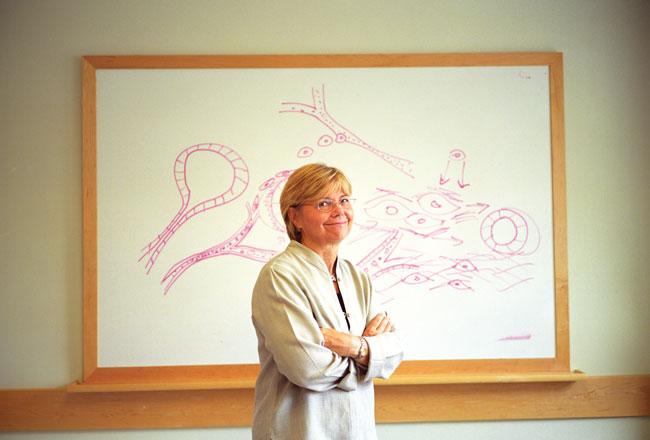
At least some of her audience was awake. It was 1997, and Joan Brugge was giving the pitch, one of 17 identical presentations over five days in Japan, one trip of many to drum up investment in ARIAD, the Cambridge, Massachusetts, biotech firm where Brugge had served as senior vice president and director of research since its celebrated founding in 1992. ARIAD’s mission, Brugge told room after room of scientists and potential investors, was to identify and develop novel cancer therapies through structure-based drug design focused on protein–protein interactions. Good drugs built on good science. But while research was uncovering promising candidates, the hard work of developing them into drugs had begun to pull focus away from the discovery of new targets.
So increasingly, Brugge found herself on the road, an evangelist in an age of evangelists, touting a scientific effort from which she was increasingly removed, and which was itself increasingly removed from discovery.
It was around that time that Brugge, a former Howard Hughes Medical Institute investigator and professor at the University of Pennsylvania, saw two paths before her. “I had to choose between becoming a full-time manager at a higher level or returning to academic research,” she recalls. “I knew which I loved.”
So that year, Brugge accepted a professorship in Harvard Medical School’s Department of Cell Biology. Once again the head of her own laboratory, Brugge would spearhead fundamental advances in cancer research, including the development of three-dimensional tissue cultures to better model breast cancer and other tumors. And when she agreed to chair the department, in 2004, she found that her experience in industry would serve her well.
“I learned a lot about leadership when I was at ARIAD,” Brugge says. Some lessons weren’t applicable: At the biotech company, she set the research agenda for senior scientists; as a department chair, she stays out of the way. “My role is to create fertile ground for discovery,” she says. Part of that is fostering collaboration.
A story from her ARIAD days makes the point. When a promising compound showed efficacy in cell-based assays, a biologist wanted evidence that it was working through the intended mechanism. But when Brugge asked a chemist to design a control, she found herself caught in a cultural divide. Whereas biologists deal in observation and uncertainty, chemists dwell in an orderly house of mechanistic determinism. “Controls,” the chemist replied, “are for losers.”
Today, Brugge invokes that anecdote for her students. The most important ingredient to a successful collaboration, she tells them, is understanding the perspectives of other people. Indeed, it is lessons about people, Brugge says, that have most helped her as a leader.
What advice would Brugge give a rising scientist, weighing a career in industry or academe? “I would encourage them to try to get to know themselves as much as possible,” she says. “Do they prefer to function as individuals or as part of a team?” But sometimes, the difference is less than meets the eye. “Everyone who directs a lab,” she says, “is a CEO of his or her own little company.”
Supporting the physician–scientist’s role.
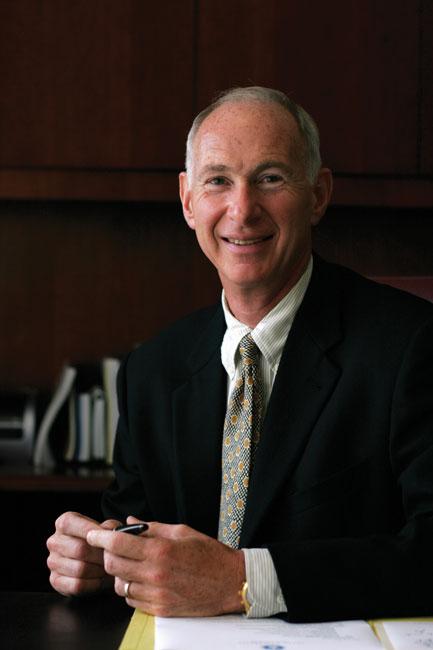
When he graduated from Harvard Medical School, Michael Rosenblatt ’73 imagined he would spend a career in academic medicine. He had just collected the Soma Weiss Award for best student research and would soon rise from trainee to chief of the endocrine unit at Massachusetts General Hospital. But a decade later, his groundbreaking research on parathyroid hormone led to a consulting role with Merck & Co.—and to new imaginings. “All the things I was writing in grant proposals about how my research eventually would lead to new treatments—well, Merck scientists were doing it,” Rosenblatt says. He was also struck by how they were doing it: together, sails filled with the kind of collaboration that the academic crosswinds of grant writing, publication, and tenure too often countervail.
So in 1983, Rosenblatt accepted a position as vice president for biological research at Merck Research Laboratories, where he co-led development of a new treatment for osteoporosis. Approved in 1995, alendronate, better known as Fosamax, heralded a new generation of bisphosphonates that would transform treatment and prevention of osteoporosis.
“That was a success story that’s had impact,” Rosenblatt says. “It has spared fractures and saved many lives; I’m very proud.” Harvard came knocking again. In 1992, Daniel Tosteson ’48, then dean of HMS, recruited Rosenblatt to lead the Harvard–MIT Division of Health Sciences and Technology. Here was an opportunity for Rosenblatt to give back—to develop the next generation of physician–scientists, even as he reconnected with his passion for research. “Physician–scientists have a special perspective,” Rosenblatt says. “To see a clinical problem, move to the laboratory, and then carry solutions back to the patient gives them a lot of insight.”
His next turn at academic leadership included the presidency of Beth Israel Deaconess Medical Center and later the deanship of Tufts University School of Medicine, where Rosenblatt drew on his experience to craft new policies governing conflicts of interest. “I was constantly grappling with the issue,” he says. “How do you work in a way that honors the principles and the mission of the academy, yet helps the academy realize its translational goals?”
Now back at Merck, Rosenblatt is still grappling. As executive vice president and chief medical officer, the company’s primary voice to the global medical community, he says research integrity demands clear rules, but he cautions that some policies chill collaboration—at a cost to science. Regardless of merit, he says, industry scientists are often excluded from the key committees of professional societies, and some societies have even considered preventing them from presenting their own data. Rosenblatt rattles off a list of Nobel laureates: Sir James Black, who developed beta-blockers; Gertrude Elion and George Hitchings, whose research produced numerous drugs, including the HIV drug AZT; and Godfrey Hounsfield, inventor of the CT scanner. All made their discoveries while in industry.
“I feel strongly that the medical profession should stand by its principles of openness and discourse,” Rosenblatt says. “Advances in science should be judged on their quality and value, and not the institutional address of the researcher.”
Jessica Cerretani is assistant editor of Harvard Medicine magazine and R. Alan Leo is a science writer in the HMS Office of Communication and External Relations.
Images: Gary Parker (Gardner), Keith Gabrielsen (Fishman), Kathleen Dooher (J. Brugge); Kenneth Gabrielsen (Rosenblatt)